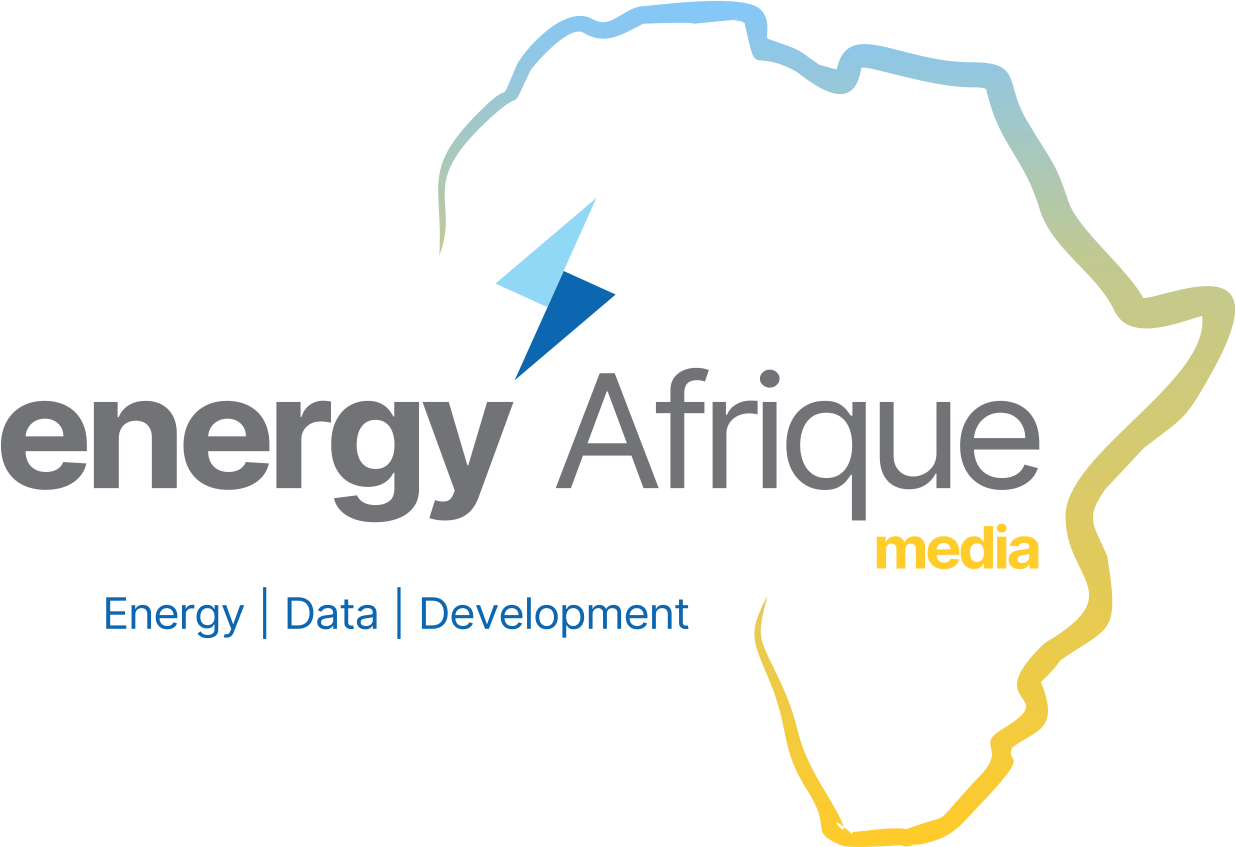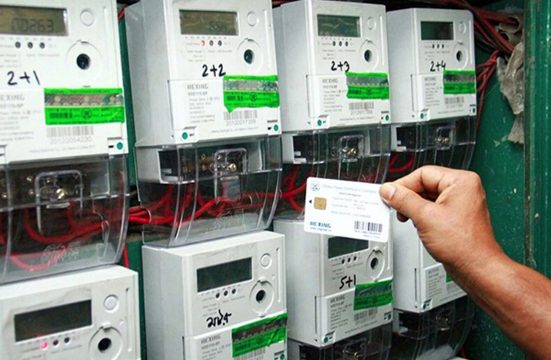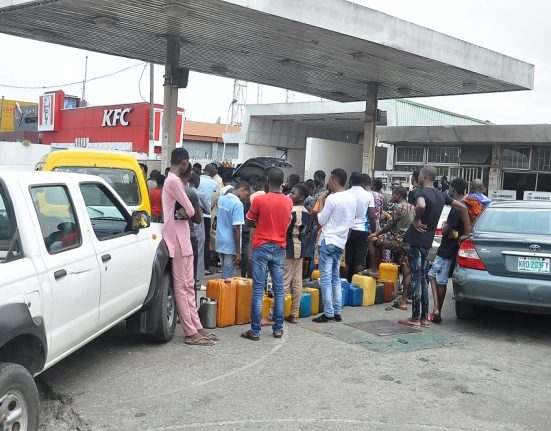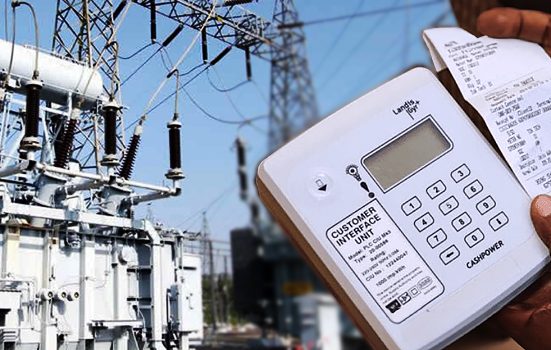From 2015 to 2023, Nigeria allocated N3.2 trillion for electricity subsidies, and in 2024, an additional N1.6 trillion is projected to be spent. This accumulates to an electricity tariff shortfall of N4.8 trillion over a span of about nine years. Despite these substantial subsidies, the state of electricity supply in the country is deteriorating under lax regulatory and political outlook, which fuel increasing challenges for manufacturers and corporate businesses that are compelled to shut down operations due to escalating costs associated with alternative energy sources. The growing disparity between expenditure and the worsening electricity situation in Nigeria highlights the urgent need for effective strategies to address and enhance the nation’s power sector.
On Thursday last week, at the Idu Industrial Zone in Abuja, sounds of heavy generators roared across the street. These diesel-powered generators run on N1,200 – N1,500 per litres of environmental polluting fossil fuel.
On a daily basis, Husein Akor’s wood processing company, which operates at the industrial area spends at least N48,000 on powering electricity generating sets per day. That is about N1.4 million a month and over N17.2 million within the month. This cost is about 40 per cent of his production expenses.
Although there is grid connectivity electricity at the industrial zone, Akor cannot trust it because it remains unreliable and has damaged his equipment many times. He had to move off the grid to sustain his business.
At the Mudiame University in Irrua, Edo State, over N45, 000 is spent daily to purchase about 30 litres of diesel at the rate of N1,500 per litre.
The grid connected electricity supply into the university is not strong enough to power some laboratory equipment not to mention a medium size industrial oven which the university used in producing bread. As such, the institution relies on solar, diesel and premium motor spirit generating sets as against the grid connection.
Mrs. Mercy Onyemaechi, aged 42, faced significant challenges after losing her husband in 2016 owing to a prolonged illness, impacting her family’s financial stability.
Left with minimal resources to support her two children, Chukwuemeka and Hanabel, the housewife ventured into various unsuccessful business endeavors. Subsequently, she established a crèche, which unfortunately had to close down as clients dwindled during the onset of the COVID-19 pandemic.
Undeterred, Onyemaechi turned to producing pap, a widely consumed staple known as akamu and ogi. Operating in the Bomsac area of Asaba, Delta State, she earns approximately N3,000 daily by supplying her clients with pap, a product derived from a N20,000 bag of corn. To preserve the pap, she relies on electricity, crucial for refrigeration.
With an expanding clientele, Onyemaechi increased her pap production, necessitating refrigeration to store part of it while gradually selling the remainder. Initially supported by six hours of daily power supply and her backup generator, she faced a new challenge when the power supply became erratic.
On November 29, 2020, having processed about 50kg of corn into pap, the nation’s electricity grid collapsed at 11:25 am, plunging the entire country into darkness and causing substantial losses for the widowed entrepreneur. The unreliable power supply became a significant obstacle to Mrs. Onyemaechi’s efforts to sustain and grow her business.
“After my power generating set developed a mechanical fault, I relied on the public supply, which was not restored for over 48 hours. As a result of several hours of a power outage, the pap became sour, unfit for consumption, and ended up as waste,” the widow said.
In Nigeria, over 80 per cent of electricity consumers are household users while a meagre 20 per cent rely on grid connected electricity. Although these businesses are cheaper when they run on grid connected or some alternative clean energy, the quality of supply and reliability of the grid collapse is a major concern. In the last 10 years, the grid has collapsed about 141 times and the electricity available on the grid, 10 years after a much trumpeted privatization exercise is about 4,500 megawatts of which only about 3,000 megawatts get to home and industries.
Within this period, only about 42.25 of customers are metered as about 57 per cent of customers are unmetered. These unmetered customers are billed arbitrarily and the fund collected from them is not properly accounted for as it goes through many hands leaving the utility company with revenue losses and inability to remit full invoice of the energy they collected.
As of the first quarter of 2023, a report of the Nigerian Electricity Regulatory Commission (NERC) showed that aggregate technical and commercial losses in the electricity sector averaged 46.39. Kaduna Electricity Distribution Company was the worst, as it recorded 75 losses, Yola Electricity Distribution Company followed at 70.04 losses while the best in terms of losses were Eko and Ikeja DisCos, which had 25 and 27 per cent losses respectively.
In the second quarter of this year, manufacturers faced a 17.3 per cent surge in production and distribution costs, accompanied by a 5.6 per cent drop in capacity utilisation, a 6.1 per cent contraction in production volume, a 5.6 per cent decline in manufacturing investment, a 5.7 per cent reduction in employment, a 6.3 per cent plunge in sales volume, and a 14.3 per cent rise in shipping costs.
The Manufacturers Association of Nigeria’s (MAN) Confidence Index for the same period identified the exorbitant cost of energy as the primary challenge in the manufacturing sector. This challenge is further compounded by high credit costs, a lack of loanable funds, multiple taxes, charges, levies, inconsistent tax policies for local producers and importers, unavailability of raw materials, delays in receiving imported raw materials, high raw material costs, forex scarcity, high exchange rates, and poor forex allocation.
Manufacturers have been compelled to invest nearly N1 trillion in alternative energy sources over the past seven years, with expenditures reaching N129 billion in 2016, N117.38 billion in 2017, N93.11 billion in 2018, N61.38 billion in 2019, N81.91 billion in 2020, N71.22 billion in 2021, and N144.3 billion in 2022.
On average, 95 manufacturing companies shut down each year, with GlaxoSmithKline Plc being the latest casualty, resulting in over 4,451 job losses annually in the manufacturing sector alone. Furthermore, factory output value declined from N3.73 trillion in the first quarter of the previous year to N2.68 trillion in the first quarter of 2022.
More Subsidy Amid Rising Liquidity Crisis
After privatising the power sector with an intention of making it self-sufficient, in 2015, the Federal Government spent N225 billion in tariff subsidies, in 2016, N308 billion was spent, in 2017, it was N351 billion, N440 billion in 2018, N528 billion in 2019, in 2020, it was N501 billion, in 2021, it came to N251 billion, in 2022 it was N144 billion and in the first half of 2023 it was N457 billion. In 2024, the figure has jumped to N1.6 trillion.
Although the subsidy came down from N528 billion in 2019 to N144 billion in 2022 as the Service Based Tariff (SBT) introduced under the former administration used unrealistic yardsticks to make consumers pay more for unimproved supply, the current economic indices, especially the floating of the naira, inflation and foreign exchange crisis pushed the subsidy to the record highs of N1.6 trillion.
Addressing The National Grid Of Greed
More money is going into the grid but the results are not reflecting. The fund is either going into a personal budget or spent on projects that are politically sensitive but economically bad. Sadly, these funds are mainly loans that would be paid by generations to come and over $7.5 billion of such loans have been taken in recent times, especially on the former President Muhammadu Buhari to improve the Sule Abdulaziz lead Transmission Company of Nigeria (TCN).
The World Bank, African Development Bank (AfDB), Japan, France Development Agency, and other financial institutions extended loans totaling over $7.5 billion to Nigeria with the aim of enhancing the transmission network and grid capacity. Unfortunately, issues such as alleged corruption, political factors, misalignment of infrastructure, and distribution companies’ incapacity to increase off-taking have hindered the intended impact of these loans, rendering government efforts seemingly futile.
In addition to the $2.3 billion Siemens deal targeting transmission infrastructure improvement, Nigeria secured a $486 million loan from the World Bank under the Nigeria Electricity Transmission Project (NETAP). Japan also provided a $242.4 million loan for the Lagos and Ogun Power Transmission System Improvement Project, while the House of Representatives revealed a $1.5 billion foreign loan to the Transmission Company of Nigeria, with an additional $500 million being negotiated with the Islamic Development Bank.
Notably, the Islamic Development Bank approved a $1.8 billion financing package for Nigeria, including an electricity loan. In 2020, the former Minister of Finance, Zainab Ahmed, disclosed the government’s request for a $3 billion World Bank loan, distributed in four tranches of $750 million each to finance the transmission network.
Despite these substantial investments, challenges persist, particularly in the North and Kaduna regions, where projects funded by various sources, including the World Bank, AfDB, and France Development Agency, are channeled. However, incomplete transitions and political considerations hinder the sector’s transformation from a government-operated system to a market-oriented one, leading to a decline in load off-take from around 4,000 megawatts to approximately 3,000 megawatts.
A consultant at Nextier Group, Femi Omisanjo, said the sector seems to have jettisoned all the frameworks, rules, codes and regulations (developed for the sector at the pre-privatisation stage), adding that the move left the market in sub-optimal pricing and uncertainty in pricing, misallocation of transmission capacity and chronic indebtedness of some participants without any retribution.
According to him, while wholesale markets are supposed to act as signal source for new investment and increase efficiency, the case in the Nigeria Power Sector is different as investments are mostly haphazard without recourse to any efficiency and financial viability.
Energy expert at PWC, Habeeb Jaiyeola, emphasises the necessity for aligning investments with optimal value and effective outcomes. This is because unless these investments seamlessly integrate with all the market players – Generation Companies (GenCos), Transmission Company of Nigeria (TCN), and Distribution Companies (DisCos), the interventions will remain a waste of hard earned resources.
Jaiyeola’s opinion is that fostering a range of solutions within the sector promotes healthy competition and encourages performance enhancement among industry players, especially when it comes to the combination of on-grid and off-grid solutions.
Tariffs Of Inefficiencies, Losses Passed End-Users
Last week, NERC released a new Multi-Year Tariff Order (MYTO). The order for the new eleven distribution companies pushed tariffs up by double of what consumers were paying. But for the year 2024, the Federal Government is expected to bear the burden for end-users.
While the government is taking up the N1.6 trillion burden, the Nigerian Bulk Electricity Trading Company’s budget in the 2024 appropriations only showed a subsidy plan of N450 billion, meaning that the government may have to raise the funding locally or from the international market amidst high borrowing profile.
Under the Abuja Electricity Distribution Company, consumers would have been paying between N152 and N73 kilowatts per hour, but the Tinubu regime only allowed them to pay between N81 and N34 kilowatts per hour.
AEDC is meant to spend N204 billion as operating expenses for the next four years, N25 billion on metering through the period and N46.92 billion as capital expenditure for the four years period.
While NERC’s approved yearly revenue requirement of the company stood at N485.11 billion, under a cost reflective tariff, the company would only make N120.88 billion but the prevailing tariff structure can only allow the organisation to raise N63.4 billion while the subsidy fragment would stand at N58.12 billion.
At the Benin Electricity Distribution Plc, consumers were meant to pay between N137 and N100 for every kilowatt hour, but they can only charge between N72 and N41 per kilowatt hour, meaning that about N65 is being paid as subsidy on every kilowatt hour people residing in some parts of the South South and South West are consuming.
Meanwhile, in the next four years, BEDC would spend N122.64 billion as operating expenses, N25 billion on metering and N14.28 billion on other capital expenditure. The company’s required yearly revenue stands at N269 billion. They will only be able to make N126 billion under a cost reflective tariff. Given the allowed tariff, the company would make N60 billion and expect N66 billion from Tinubu as tariff shortfall.
In Enugu Electricity Distribution Company (EEDC), which covers all the Southeast states, the real cost reflective tariff is between N147 and N96 per kilowatt depending on the tariff plan, which is spread between band A to E, but the allowed tariff, which is what consumers would be paying is N71 and N36 per kilowatt hour. This means that the Federal Government would pay between N76 and N35 on every kilowatt of electricity consumed in Enugu, Ebony, Anambra, Imo and Abia.
NERC has asked the EEDC to spend N25 billion on providing 260,000 prepaid meters to consumers in the region in the next four years.
The company would spend N12.6 billion as operating expenses in four years. The yearly revenue requirement is N241 billion, under cost reflective tariff, the company would make N128.49 billion but under the prevailing scenario, it would make N59 billion and expect N69 billion from the government.
Under the Eko Electricity Distribution Company, consumers were meant to pay between N125 and N71 per kilowatt hour, but the allowed tariff stands between N68 and N32 per kilowatt hour. The subsidy payment across the different bands of A to E stands at about N57 on every kilowatt hour.
The company, according to NERC’s order, would spend about N180 billion in the next four years as operating expenses. N25 billion would be expended on metering under that period and N66.36 billion would be on capital investment.
Although the yearly revenue requirement of the company stands at N412.41 billion, it can only generate N115 billion under cost reflective situations. With the current arrangement, the company would generate N59.50 billion and expect N55.30 billion from the government as tariff shortfall.
As of the last count, the power sector indebted to Deposit Money Banks (DMBs) N836.08 billion as the sector in owing the Central Bank of Nigeria (CBN) about N1.3 trillion in series of intervention. This is apart from the indebtedness of the sector to the World Bank and other development funders.
The concerns in the tariff designed by NERC is the level of inefficiencies in the system. While the key performance indicators of the distribution companies were directly tied to their ability to reduce ATC & C losses and improve supply, the situation remained unchanged but tariffs are on the rise, almost double of what the situation was. This is why most stakeholders believe that the assumption on the MYTO is flawed and only prioritized the market against consumers.
This is critical because the subsidy would have been minimal while the public which are expected to begin to pay the full tariffs from next year would have been paying value instead of paying for darkness.
Admittedly, inflation, foreign exchange and the value of the naira have worsened, the initial basis for tariff increase was pegged along hours of electricity supply, which NERC has not been able to monitor or enforce to ensure that DisCos comply.
President of Nigerian Economic Society and energy expert at the University of Ibadan, Prof Adeola Adenikinju said subsidy and a mere increase in tariffs won’t solve the challenges in the sector. He insisted that the sector must find a way to reduce the losses and the inefficiencies in the sector which are being passed to the public.
Consumer Rights advocate, Kunle Olubiyo noted that the current tariffs as well as the subsidy are using wrong indicators, over invoicing, over bloated prices of gas, falsed ATC & C losses and fake generated capacity.
Despite the tariffs, the sector lacks the capacity to resolve consumer challenges. Currently, most consumers end up replacing transformers, transformers oil, poles and cable because they will remain in darkness for months due to DisCos’ lack of capacity.
Between government’s liquidity crisis and power sectors near bankruptcy
Nigeria currently has an inflation rate of 28.2 percent and public debt hovering around N87.38 trillion. Currently, the country is approaching the World Bank to raise an additional $1.5 billion debt even as the implementation of the 2024 budget remains a mirage.
Over the years, the federal government has been unable to keep promises in the power sector. The invoices of the generation companies are not paid in full and over 20 of the 27 power plants in the country are in comatose as they lack funding for routine maintenance.
With about N2 trillion debts to banks and other indebtedness of the power sector to the World Bank and other development funders, NERC has expressed fear over the sustainability of the subsidy regime, stressing that the ability of the government to maintain the liquidity issue in the sector is critical.
President of Nigerian Economic Society and energy expert at the University of Ibadan, Prof Adeola Adenikinju said: “Government has fiscal challenges, and the fiscal space is limited. Borrowing option is now limited because government debt has gone up significantly and we are reaching a threshold of sustainability of the debt. The consumer must bear the cost and the burden,” Adenikinju said.
Chief Executive Officer of Integrated Africa Power (IAP), Chigozie Nweke-Eze, said the new policy makes the administration’s intervention seem contradictory because while it removed fuel subsidy, it replaced it with electricity tariff subsidy.
“Subsidy distorts the market and prevents healthy market competition. In the case of Nigeria, subsidies have been the major cause of theft and corruption in the management of public funds.
“Without subsidies, the best technologies will prevail. A subsidy-free market provides the opportunity for renewable technologies, especially solar, to thrive, while saving the government money and attracting local and foreign investments into the sector,” he said.
According to him, these subsidies have failed in the past and it is important not to continue repeating past mistakes.
Nweke-Eze noted that policies in the energy and electricity sector should be tailored to the realities and context of the countries they are implemented, stressing that Nigeria needs to phase out subsidies and provide specialized funds for managing and reinvesting the saved proceeds responsibly, transparently and with accountability to Nigerians.
Possibly Solutions
Liberalising the power sector remains a key option that would enable willing buyers and sellers and bring in a level of sanity and discipline in the power sector.
While the sector must recoup investment and make profit, a realistic tariffs template is needed. Passing the burden of the inefficiencies of the sector to the consumer remains unfair. Moreso, the purchasing power of Nigerians is low, high tariffs may further affect the sector.
Achieving over 90 per cent metering rate will address collection challenges and increase revenue in the sector.
This article was originally published on TheGuardian








